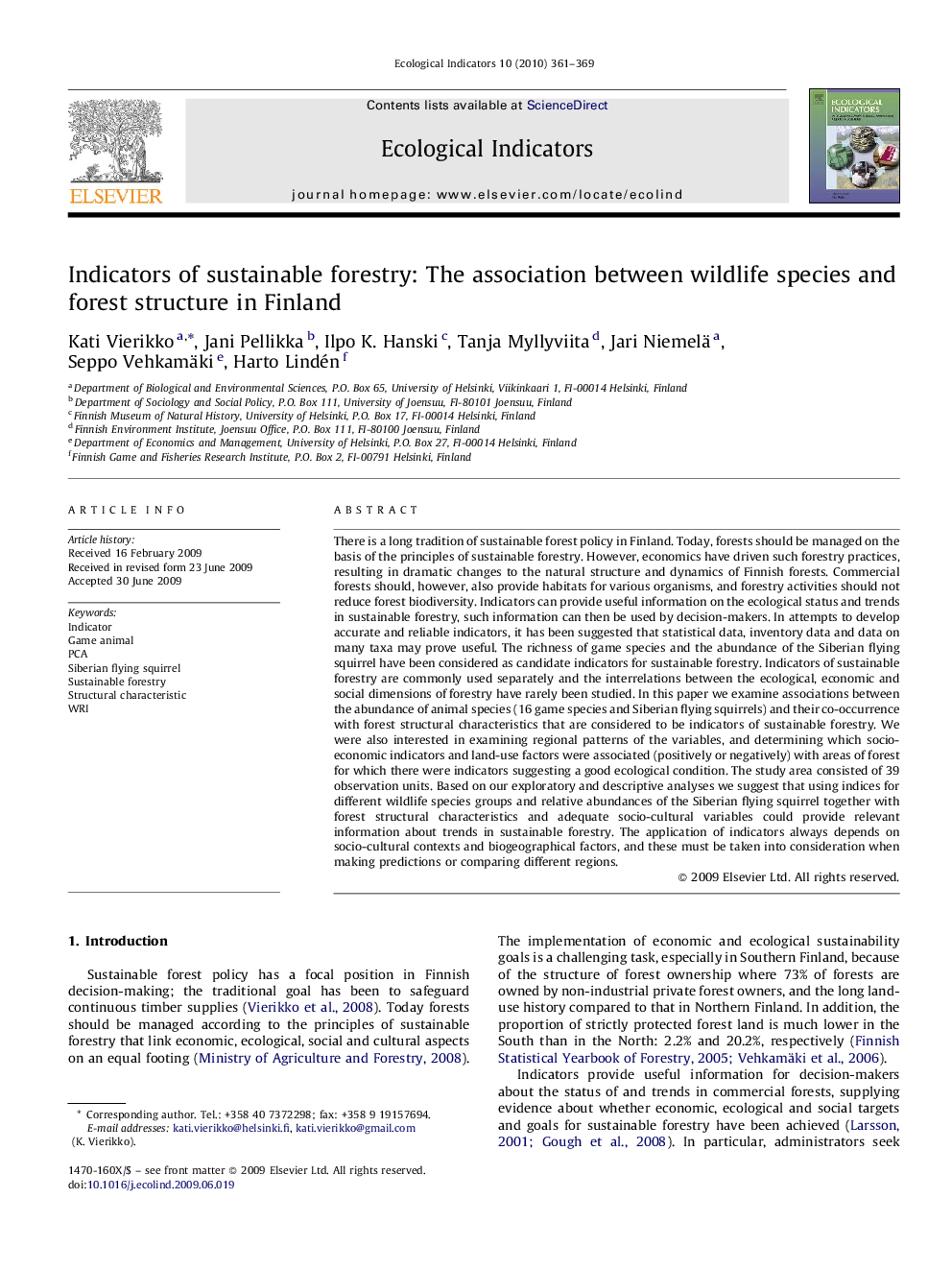| Article ID | Journal | Published Year | Pages | File Type |
|---|---|---|---|---|
| 4374292 | Ecological Indicators | 2010 | 9 Pages |
There is a long tradition of sustainable forest policy in Finland. Today, forests should be managed on the basis of the principles of sustainable forestry. However, economics have driven such forestry practices, resulting in dramatic changes to the natural structure and dynamics of Finnish forests. Commercial forests should, however, also provide habitats for various organisms, and forestry activities should not reduce forest biodiversity. Indicators can provide useful information on the ecological status and trends in sustainable forestry, such information can then be used by decision-makers. In attempts to develop accurate and reliable indicators, it has been suggested that statistical data, inventory data and data on many taxa may prove useful. The richness of game species and the abundance of the Siberian flying squirrel have been considered as candidate indicators for sustainable forestry. Indicators of sustainable forestry are commonly used separately and the interrelations between the ecological, economic and social dimensions of forestry have rarely been studied. In this paper we examine associations between the abundance of animal species (16 game species and Siberian flying squirrels) and their co-occurrence with forest structural characteristics that are considered to be indicators of sustainable forestry. We were also interested in examining regional patterns of the variables, and determining which socio-economic indicators and land-use factors were associated (positively or negatively) with areas of forest for which there were indicators suggesting a good ecological condition. The study area consisted of 39 observation units. Based on our exploratory and descriptive analyses we suggest that using indices for different wildlife species groups and relative abundances of the Siberian flying squirrel together with forest structural characteristics and adequate socio-cultural variables could provide relevant information about trends in sustainable forestry. The application of indicators always depends on socio-cultural contexts and biogeographical factors, and these must be taken into consideration when making predictions or comparing different regions.
